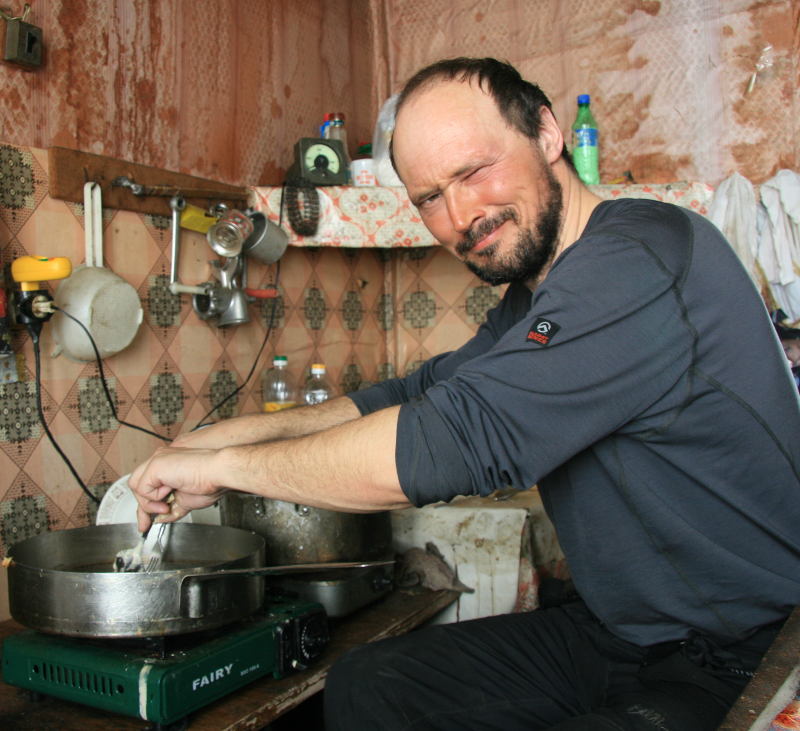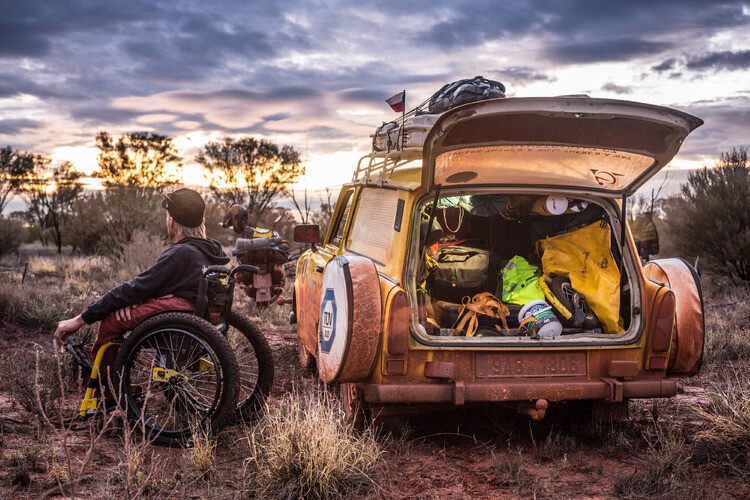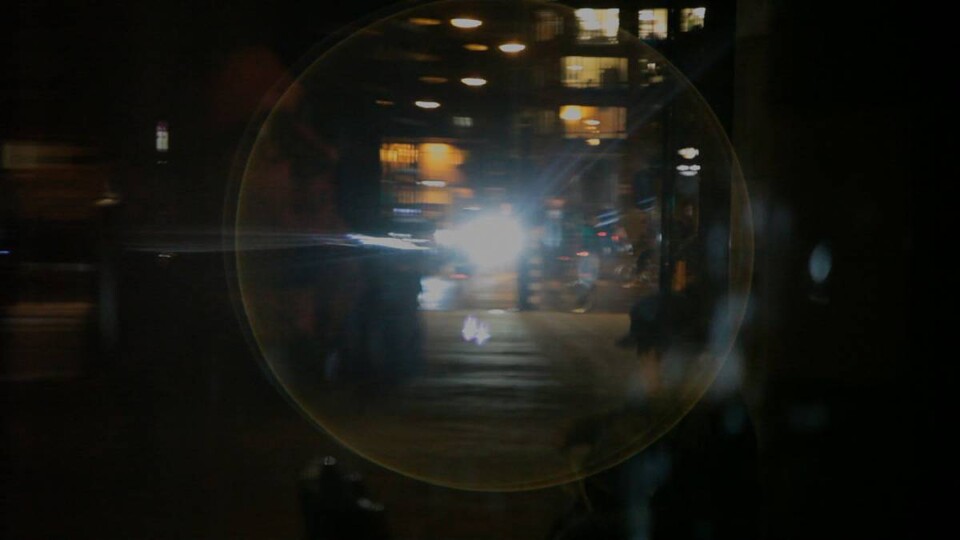Active Scriptwriting with a Camera in Your Hand
The new film, Afloat, by Martin Ryšavý discusses the future of the mining-impacted landscape of northern Bohemia, should it be transformed into a lake resort or a sea stretching from Kadaň to Teplice? In the following interview, he admits that a documentary director must sometimes push the limits of documentary reality.
The film Afloat depicts the current situation related to the revitalisation of northern Bohemian landscape devastated by coal mining. Where did you look for inspiration?
I more or less worked with the same assignment that I usually give to my students – explore the landscape that appeals to you and that plays an important role in your life. You have to feel its essence, visit the place and explore it and listen to the story the landscape narrates – the story should not be imposed on the landscape. This may be illustrated by the example of numerous Czech fiction films with social implications where industrial structures serve as a prop to highlight the misery of the situation. These are typically films about the everyday troubles that people experience anywhere in the world, but with an electric power plant in the second-plan which is supposed to indicate that the area is dominated by industry that might not in fact be very effective, leaving people unemployed and frustrated – and the plant adds a bit more pathos to the tragedy. So it is actually not about the landscape.
Do you have a personal relation to the Podkrušnohoří region?
I spent a part of my childhood in the landscape, which I also decided to portray in my film. My mother’s relatives live in the north of Bohemia and I used to go there quite often as a kid. But I didn’t like the landscape then. I was infused with the adventurous and romantic sceneries depicted in literature and my idea of a beautiful or even dangerous landscape was primarily mountains, jungles, deserts but definitely not the industrial scenery of the region at the foot of the Krušné hory mountains. It was not until much later that I started coming back and discovering food for my imagination and thoughts, inspired especially by the landscape’s incredible transformation capacity. I actually initially wanted to shoot a film about imagination – about visions and dreams about the transformations of this landscape – the landscape conjoined with the industrial setting being the initiator of the film’s story.

Shooting of Afloat
What do you think of the plan to build a little artificial sea between Kadaň and Teplice by flooding the excavated land – one of the main themes in your film?
The plan to build an artificial sea is a beautiful and a properly megalomaniac vision. But the goal is not to make this vision come true at any cost, the idea is supposed to primarily point out the absence of a solid conceptual approach to the revitalisation of the landscape at the foot of the Krušné hory mountains as a whole. The individual mines are operated by companies that don’t communicate with one another. Just take a look at the typical promotional motto: “This too used to be a mining area!” attached to a picture of beautiful lakeside scenery. This is supposed to create the illusion that coal is extracted in the region for the sole purpose of creating lakeside resorts. In short – the landscape basically plays the role of a milking cow that produces coal. Everyone takes what they see fit, and after the rape and devastation is complete, the place is given a facelift to keep the locals quiet. But this is impossible to capture in the form of a documentary film because these processes take place over a long period of time in the realm of visions, ideas and dreams.
A documentary can't look into people's minds
OK, what is then the purpose of your documentary, to criticise the current situation or to ring the bell?
The film was certainly not meant as a superficial criticism. We tried to steer clear from similar accents during the filming process. What was important to us was the element of imagination. Indeed, imagination also implicitly features a critical aspect but this is not the main mission of our film. We could certainly shoot a film about those who are in charge of the mining procedures or those who are opposed it, or about people who reclaim the landscape, asking whether they are efficient in doing so. But in that case, we would completely miss the crucial contribution of landscape-forming imagination. When we decided for the traditional documentary form and asked the locals about their own activities and their opinions, the footage started to behave strangely. They either did not say anything, because they never realised that the situation was temporary, or, on the other hand, they talked a lot, clearly along the lines of some set scenario. We found ourselves in situations when we saw the dreaming process or rather the necessity to dream about nature as something that needs more than a traditional documentary observation. Consequently, we opted rather for “artificial” filmmaking principles.
Are you indicating that some of the key situations were staged?
Why do spectators need to know the answer to the question? If I tell you now that everything is staged or that nothing is staged, what difference will it make? Will it improve or spoil your film experience? Yes, the answer will, to a certain extent, satisfy people’s curiosity, and that’s all. But it is actually this uncertainty that I find attractive about documentary filmmaking – the possibility of proving that fiction and documentary film genres are permeable and there is no fixed line between them – and working with the fiction and documentary genres so that the question of whether the situations are staged, or not, becomes meaningless.
Is it not absurd that the first internationally renowned documentary film by Robert Flaherty dating back to 1920s was not a proper documentary film when its director claimed that the situations were staged to make them more authentic?
Yes, this has always been an issue and I think that nothing has changed. Traditional documentary films are still made. You can make it your filmmaking credo to stage all the action or you can follow the rule that nothing will be staged. And you can also explore the territory between these two possibilities and subsequently edit and adjust the script. Each new day of shooting and editing, and each new scene can have a substantial impact on the script. This is both exciting and risky because you never know where you are heading.
Enhanced documentary reality
And what did the shooting in the Krušné hory coal mine look like, can you describe the specific combination of fiction and documentary elements in practice?
The crew essentially consisted of three people, cameraman Honza Procházka, musician Pavel Kopecký, and me. The three of us prepared a more-or-less clear concept of who our protagonists actually were, were they were going, what they were doing and what was supposed to happen to them, but during the shooting it turned out that they themselves knew it better than us. And we were suddenly the ones who had to adapt to what the characters came up with and not the other way around – they no longer had to follow our concepts and ideas, albeit vague. A purely documentary form will never provide an insight into people’s minds, you, as a director, have to push the film’s observational limits. You can thus indicate what the people are aiming for, what the whole world is aiming for. Visions are immensely important and we must look for ways of making films about them.
Shooting in Chomutov
Did you as the film’s director guide its protagonists?
It’s difficult to put it this way. We didn’t tell the actors what to do. The three of us were constantly visiting various places in North Bohemia, floating down peculiar streams and rivers and discussing the landscape. We were analysing whether to keep strictly to documentary methods or to stage some of the scenes. The creative process is still underway. Even the term afloat indicates our approach to scriptwriting: it all is fluid.
Projective scriptwriting
You say that there never was a specific script for the shooting. What is the film based on then?
I would call it an active or projective scriptwriting with a camera in the hand. Scriptwriting is not only about writing scripts. People keep all sorts of ideas and vision at the backs of their minds and sometimes you can only give them a little hint and observe what will happen next. You only push the story forward and then it snowballs more and more situations. And when you no longer like the direction the story has taken, you just push in a different way and watch. This also may be and actually should be the role of a scriptwriter who does not only need to be armed with pen and paper, he or she can suffice with a camera and the people in front of it and use his or her distinctive approach to push them to play their parts in a story.
Do you teach this to your students at FAMU’s Scriptwriting and Dramaturgy Department?
I believe that the scriptwriting programme should help people become distinctive authors, visionaries, who will be able to create various functioning worlds using their own imagination and all that is related. Another important stage is the search for suitable updates of your script. It is not necessary to make a film based on your script, there are many more options. A good script that is a part of an efficiently built imaginary world can be made into a theatre play, a comic, a work of fiction, a painting, a performance in a landscape, etc. A scriptwriter who stays idle waiting for an open-minded director or for funds for shooting may easily never see his work on the screen.
One may object that FAMU is a film and TV school, why then should the students produce fiction or drama when they are supposed to write scripts?
And that’s the irony. To me, scriptwriting seems less and less related to filmmaking. A script has its own rules and a range of operation and one of the possibilities – albeit not the only one, or the best and not at all privileged – is its potential of being made into a film. A script is neither a literary nor pictorial work. A script is, most of all, a projective work. A scriptwriter projects his or her own vision into the world and all of the means of making it up-to-date are equally good. A scriptwriter uses everything that is associated with their vision as a building material. It may and should be changeable with respect to the development of the events that are recorded and induced, discovered and plotted, manipulated and provoked. Such scriptwriting is possible; it is only absurd that it is a subject taught at FAMU.
|
|
Martin Ryšavý (1967) graduated in biology from Charles University and in scriptwriting from FAMU, where he currently works as the Head of the Scriptwriting and Dramaturgy Department. He made several ethnographic documentary films, notably in the Siberia region and in Vietnam. His film Afonka Does Not Want to Herd Reindeer Anymore received the 2004 Best Czech Documentary Film Award at Jihlava IDFF. Siberia was also the focus of his two-part publication, Journeys to Siberia (2008), which garnered the Magnesia Litera Award. Ten years after filming his Forest Walkers (2001), he turned the film’s script into a book. His Land of Dreams (2009) won the Pavel Koutecký award. |
Translated by Barbora Rozkošná





